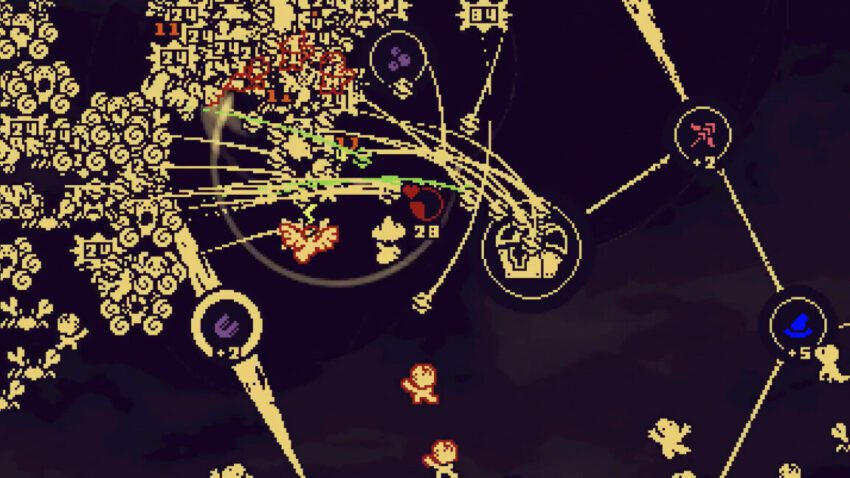
with skigill the classic rpg skill tree Indie developer Achromi has reimagined the classic RPG skill tree, transforming it into a dynamic battlefield in their latest Early Access title, Skigill.
with skigill the classic rpg skill tree
Revolutionizing the Skill Tree Concept
In traditional role-playing games (RPGs), skill trees serve as a strategic pause, allowing players to assess their character’s growth and make decisions about upgrades. This moment of reflection is often accompanied by a plethora of choices, where players can select paths that enhance their abilities or alter their gameplay style. However, Achromi has taken this familiar mechanic and flipped it on its head with Skigill, creating a unique gameplay experience that merges the skill tree with real-time action.
Gameplay Mechanics
Skigill draws inspiration from the popular game Vampire Survivors, which has garnered a dedicated following for its engaging mechanics and addictive gameplay. In Skigill, players navigate through waves of enemies that approach in a somewhat chaotic manner. The game’s automatic targeting system allows players to focus on movement and strategy rather than manual aiming, which is a significant departure from traditional RPGs where precision is often key.
As players progress through the game, they collect coins from defeated enemies, which can be used to unlock new abilities and upgrades. This system encourages players to continuously engage with the action, as the rewards are immediate and satisfying. The combination of automatic weapon deployment and enemy waves creates a frenetic atmosphere that keeps players on their toes, making every moment feel crucial.
Skill Tree as a Battlefield
What sets Skigill apart is its innovative approach to the skill tree. Instead of being a static menu where players make decisions in isolation, the skill tree becomes an active part of the gameplay. Players must navigate the skill tree while simultaneously fending off hordes of enemies, creating a sense of urgency that is often absent in traditional RPGs. This mechanic not only enhances the gameplay experience but also adds a layer of strategy, as players must balance their focus between upgrading their character and surviving the onslaught.
Current State of the Game
As of now, Skigill is in Early Access, which means that while it offers a fresh take on the genre, it still lacks the depth and content that could keep players engaged over the long term. The game currently features a limited number of skills and upgrades, which may leave some players wanting more. However, the core mechanics are solid, and the potential for expansion is evident.
Players have noted that the game’s pacing feels right, with a balance between action and decision-making that keeps the adrenaline pumping. The visual design is vibrant and engaging, with a distinct art style that complements the chaotic nature of the gameplay. The sound design also plays a crucial role, as the audio cues enhance the feeling of immersion, making each victory over an enemy feel rewarding.
Community Feedback
Early access games often rely heavily on community feedback to shape their development, and Skigill is no exception. Players have been vocal about their experiences, providing valuable insights into what works and what could be improved. The developers at Achromi have been responsive, actively engaging with the community and implementing changes based on player suggestions.
Some players have expressed a desire for more diverse enemy types and environments, which could add variety to the gameplay. Others have suggested additional skills and upgrades to enhance the strategic elements of the skill tree. This feedback loop is essential for the game’s growth, as it allows the developers to refine the experience and ensure that it meets player expectations.
The Future of Skigill
Looking ahead, the future of Skigill appears promising. The developers have outlined plans for regular updates, which will introduce new content and features to keep the gameplay fresh. This commitment to ongoing development is crucial for maintaining player interest, especially in a genre that thrives on replayability.
One area that Achromi may explore is the introduction of multiplayer elements. Cooperative or competitive modes could significantly enhance the game’s appeal, allowing players to team up or face off against each other in the chaotic environment of Skigill. Such features could also foster a sense of community among players, further solidifying the game’s place in the indie gaming landscape.
Implications for the RPG Genre
Skigill’s innovative approach to the skill tree has broader implications for the RPG genre as a whole. By integrating the skill tree into the core gameplay, Achromi challenges the conventions that have long defined RPGs. This could pave the way for other developers to experiment with similar mechanics, leading to a new wave of games that prioritize action and strategy in equal measure.
The success of Skigill may also encourage more indie developers to take risks with established genres, fostering creativity and innovation. As players become more receptive to unconventional gameplay mechanics, the gaming landscape could shift, leading to a more diverse array of titles that push the boundaries of traditional gaming experiences.
Conclusion
In summary, Skigill represents a refreshing take on the RPG skill tree, transforming it from a passive decision-making tool into an active battlefield. While the game is still in its Early Access phase and lacks some depth, its engaging mechanics and innovative design make it a noteworthy addition to the genre. As Achromi continues to develop the game and respond to community feedback, Skigill has the potential to evolve into a standout title that captivates players for years to come.
Source: Original report
Was this helpful?
Last Modified: November 7, 2025 at 9:36 pm
3 views















